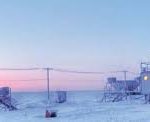A Quick Spotlight On The Midstream oil and gas Activity In Tanzania
These are series of articles focusing on value chain in the oil and gas in Tanzania. If you missed out the previous article regarding the first part of oil and gas value in Tanzania, I strongly recommend to read it first before you move to this article. Follow the link to access it Tanzania upstream oil and gas value chain
Now you have in depth understanding of the first part of the oil and gas value chain, let’s talk about the next part of the oil and gas value chain in Tanzania. That is a midstream.
Table of Content
- What is Midstream
- Main activities In The Midstream
- Characteristics of the midstream part of the oil and gas value chain
- The Midstream Infrastructure in Tanzania
What is midstream?
Midstream is a middle part of the crude oil, and gas value chain that involves transporting and storage of the oil and gas. Once the oil and gas is produced should be sent to the refinery or processing plants
So midstream is a link among oil and gas producing regions and processing plants, refinery and consumers.
The main activities in the midstream.
Now you know the meaning of the midstream, now let’s talk about the activities in the midstream segment of the value chain. The activities in the midstream include
1.Processing
To make the transportation of oil or natural gas easy, the petroleum will be pre-processed in the production region before they get to the refineries or processing plants for complete processing. These are done to remove impurities such as water, hydrogen sulfide that associated with raw materials.
Also Read: How To Register Your Business in Tanzania – 5 Steps
2.Transportation
This is a main activity of the midstream, oil and gas can be transported across the sea by tankers and barges, also can be pumped through pipelines. Railroad and car-truck are also transportation mode. Companies realize the best way to move oil and gas is to pump in the pipe. That is a reason the most common mode of oil and gas transportation is via pipeline.
3.Storage
The last components of the midstream are storage facilities. These are facilities constructed to store crude oil and petroleum products. Because of the high pressure, natural gas is stored in the underground reservoir until is ready for the transportation to the market. The storage facilities for crude oil and oil substances include:
- Tank Farms
- Holding Tanks
- Bulk terminals
Characteristics of The Midstream part Of The Oil and Gas Value Chain
Let’s talk about the main characteristics of the midstream business
1.Less Risk
Midstream part of the oil and gas value chain is considered as a low risk when you compare with other oil and gas value chain midstream doesn’t have the risk, exactly them as that in upstream business
2.Highly regulated.
The midstream is highly regulated in Tanzania specifically, pipeline components. For example, before you build a pipeline you should get all permits and agreements of all people affected by it.
Tanzania Oil and Gas Midstream Infrastructures
Now that let’s talk about how crude oil, petroleum products, and natural gas are transported in Tanzania
Trucking: Up to 2016 the road trucks was the main mode of transportation of the petroleum products from the port, receiving terminal to the outlay regions in the country
Also, the road was used to transport petroleum products to other countries mainly Rwanda, Burundi, Uganda, and the Democratic Republic of Congo.
Pipeline:
In the most cases pipeline has been transporting natural gas in the country. Here are the main oil and gas pipeline in Tanzania.
In Tanzania midstream part we have four main oil and gas pipeline that move oil and gas to the various destination. Here are the main oil and gas pipeline in Tanzania:
1. Songa Songa Pipeline
This is a 207-kilometer long pipeline that transports natural gas from the Songo Songo gas field in Lind region to Dar es Salaam. The pipeline has the capacity to transport 35 million cubic feet of the natural gas per day. The pipeline is owned by a private company called Songas Limited. The construction of the pipeline started and 2003 and completed in 2004.
2. Mtwara-Dar es Salaam Pipeline
The second pipeline is 532km long that pump natural gas from Mnazi Bay gas field in Mtwara to Dar es Salaam. The pipeline has the capacity to transport 210 million cubic feet of gas a day The construction started In July 2012 and completed in 2015
3. Tazama-Zambia Pipeline
The pipeline is 1710 kilometer in length that transport petroleum feedstock from Dar e Salaam In Tanzania to Ndola, Zambia. Tazama pipeline built to transport petroleum product. But it has been transporting petroleum product until the Ndola refinery was built in 1973 when it turned and started to move petroleum feedstock.The pipeline has the capacity to pump 2200 barrel of petroleum product. Also, the pipeline is operated by the government of Tanzania and Zambia in which Zambia government has interest rates of 67 percent and Tanzania government has 33 percent.
4. East African Crude Oil Pipeline (EACOP)
This is 1445 kilometer long pipeline, proposed to pump crude oil from Kabaale-Homa in Uganda, to Chongeleani Peninsular near Tanga port in Tanzania. The construction of the pipeline is expected to start in January after the final decision is reached in December 2017.
Once the pipeline is completed will be capable to move 216,000 Barrel of oil per day, The The USD 3.5 billion associated with construction of this pipeline will increase inflow of Foreign Direct Investment by 60 percent in Tanzania and Uganda.
I hope this help, if you find this information please share with friends.
Mobile +255655376543
Email: Hussein.Boffu@tanzaniapetroleum.com



